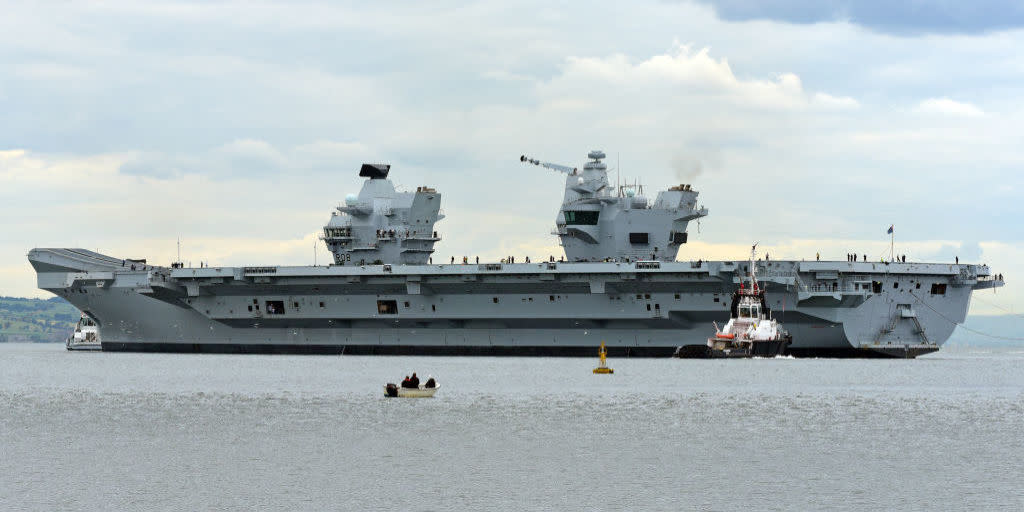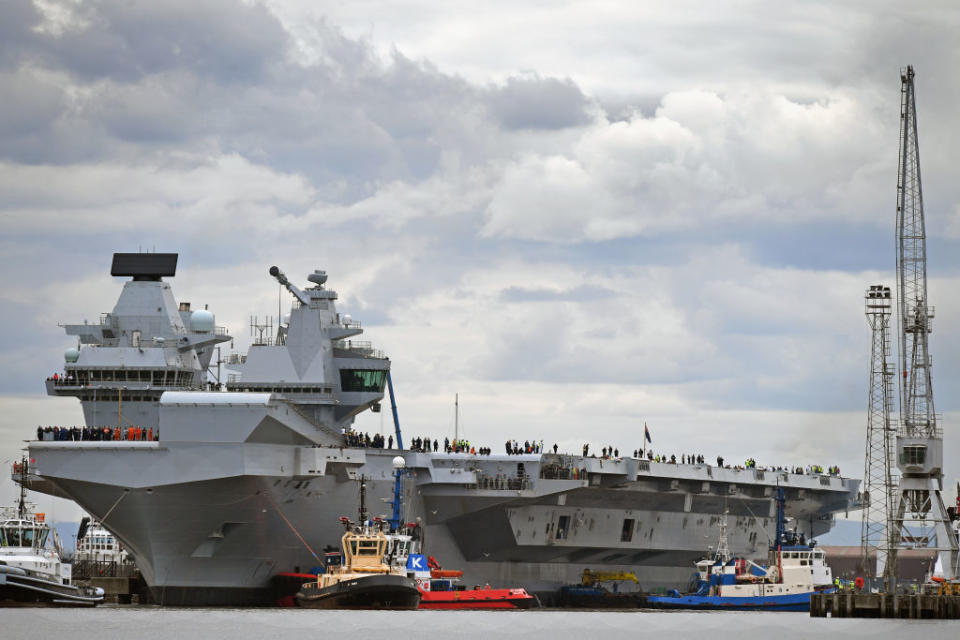Britain's Colossal New Carrier Will Launch American F-35s

The HMS Queen Elizabeth, Britain's biggest warship ever, set sail for the first time today, three years after the U.K. decommissioned its last carrier, the HMS Illustrious, in 2014. The Royal Navy calls it "four acres of sovereign territory, deployable across the globe to serve the United Kingdom."
At 65,000 tons and 920 feet, the Queen Elizabeth is a giant compared to the Illustrious, which weighed barely one-third as much and was only 690 feet long. She's also bigger than the 45,000-ton HMS Vanguard, Britain's biggest battleship launched toward the end of World War II.
The Illustrious and her sister ships carried Sea Harrier aircraft, most notably during the 1982 Falklands conflict. But Queen Elizabeth will deploy a more advanced, more familiar aircraft-the F-35B Lightning. With the U.K.'s own F-35B squadron not launching until 2023, the Queen Elizabeth will deploy U.S. Marine Corps F-35Bs under an agreement signed in 2016. This is a reciprocal arrangement, meaning Royal Navy F-35Bs will one day fly off the decks of American carriers.
Jerry Kyd, Queen Elizabeth's Captain, says that the maximum number of aircraft it will carry will be in the "upper fifties," though it'll begin operations with only 24 F-35Bs onboard. The air complement also have helicopters, which might include nine Merlin anti-submarine helicopters and another four for airborne early warning. For a littoral role – in support of land operations – the Queen Elizabeth could carry a mix of Chinook heavy transports, Apache gunships, and Lynx Wildcat multirole helicopters.

Much like its international equivalents, the Queen Elizabeth is a huge feat of engineering. Construction work was distributed among six shipyards since no single yard could take on the entire job, and some 11,000 workers were involved in the project. This is also a warship for the modern age, the Queen Elizabeth has a high-speed data network with five thousand miles of optical fiber.
The new carrier has two types of power source: two 48,000 horsepower gas turbines. and four diesel generators, two rated at 15,000-HP and two at 12,000 hp. Navies rarely give away the exact speeds of their vessels, preferring to keep potential opponents guessing, but the maximum speed is given as over 29 mph.
While the Queen Elizabeth may be larger than any other British ship, she is a size down from U.S. carriers. The USS Gerald R. Ford, due to be commissioned next month, is 25 percent longer at 1,106 feet long and over 50 percent heavier. The Ford is also nuclear-powered, a more expensive and more powerful option than gas or diesel. While classified, the Ford's top speed is given as "in excess of 35 mph" or about 20 percent faster than the British carrier. Nuclear power also means no need to refuel, whereas the Queen Elizabeth needs to find a gas station every ten thousand miles.

While both are impressive ships, they also reflect each country's military budgets. The U.S. spends almost $600 billion a year on the military, while UK defense budget is about one-tenth as much. Both of these ships also arrive at a time when some analysts question whether carriers are now becoming outdated since they are now too vulnerable to modern missiles. Another question ask whether navies should be switching to swarms of unmanned platforms rather than carriers for launching manned aircraft.
However, Britain has been a major naval power for centuries, and having a carrier puts you in an elite club. The U.S. has ten active carriers, China has one carrier in service, with another undergoing trials, and Russia also has one. France has one working carrier and another being overhauled. Now, Britain again joins the club.
You Might Also Like


